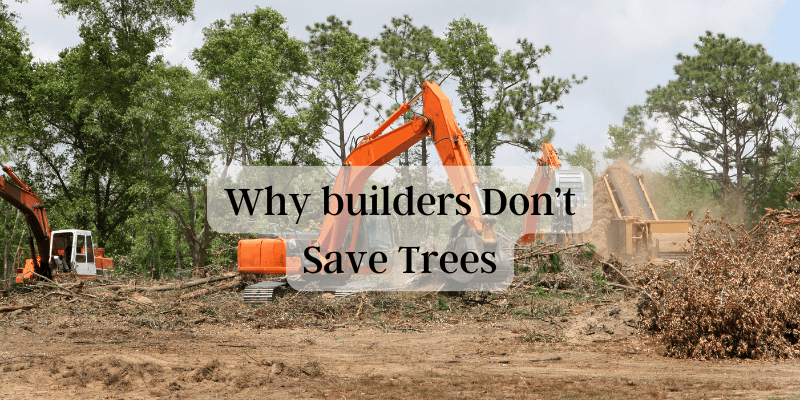Palm Coast Local
Locals Helping Locals

Revealing The Dirt. Why trees are not saved when building homes
- Details
- Written by: Palm Coast Local
- Parent Category: Business Blog
- Category: Garden & Lawn

It's not a dirty secret we are revealing but an answer to the question from new residence and those who wonder why builders don't save tree when clearing land.
Over the past few years in Palm Coast, and now large parts of Bunnell in Flagler County, we’ve witnessed an increasing trend of land being cleared to make way for new homes. It’s painful to see our beautiful community laid bare, and whether you’re a new resident or a long-time local, you’ve likely driven past these freshly cleared lots and wondered: why is this happening? Palm Coast Local recently uncovered builders' “dirty” secret, and now you can learn it too. The straightforward answer?
Fill Dirt.
Florida’s history is deeply tied to its unique landscape—much of it was originally swampland. We live surrounded by water and sit atop a vast aquifer system. Florida’s natural beauty, native plants, and towering trees have made it a desirable place to live, raise a family, or enjoy retirement. However, our beloved state, including Palm Coast and Flagler County, is undergoing rapid development. While small projects may go unnoticed, the cumulative effect of numerous developments has drawn attention from local residents.
Palm Coast Local dug down into the issue to uncover the reasons behind totally clearing land to build on. While some of these reasons make practical sense, they do not excuse some practices from working to preserve our natural habitat—not only for us, but for the animals who are being displaced or, in some cases, wiped out entirely.
Here are the top reasons builders bulldoze land and remove all trees instead of saving them:
Fill Dirt Suffocates Existing Trees and Plants - When fill dirt is brought in to elevate the land, it covers the roots of existing trees and plants. This suffocates them, leading to a slow death. Builders clear the lot to prevent this problem from occurring after construction.
Fill Dirt Is Necessary for Building Stability - Florida’s sandy soil requires fill dirt to build up the land, compact it, and ensure the stability of the home’s foundation. Without this process, homes could suffer from shifting foundations, cracked driveways, or plumbing issues. Utility lines also need to be buried beneath compacted soil.
Saving Trees Is Costly and Raises Home Prices - Selectively saving trees requires additional planning, labor, and resources, which increases the overall cost of building homes. Builders often choose to clear lots entirely to keep costs down.
Healthy Trees Must Be Verified by an Arborist - It’s not as simple as picking a few trees to save. Builders must hire an Arborist to inspect and verify which trees are healthy and which are diseased or unsafe. This adds another layer of expense and complexity to the project.
Fill Dirt Elevates Land to Meet Building Codes - To comply with building codes and ensure proper water runoff during heavy rains or storms, fill dirt is used to raise the elevation of the land. This helps protect properties from flooding, which is critical in Florida’s climate.
With these reasons in mind, it’s easier to understand why trees often aren’t saved during new construction. However, this doesn’t mean we can’t find better ways to preserve our natural beauty and tree canopies. We need to advocate for smarter development practices that balance growth with environmental sustainability. It’s time for builders and local governments to take proactive steps to protect the environment we all cherish.
Here in Palm Coast builders are required to replace one (1) one shade tree and three (3) understory trees per so many square footage of land cleared. While a shade tree can grow extremely large and potentially cause problems in the future, the reduction previously from (2) two shade trees to now (1) one is justified. However, the issue arises when the replacement trees that builders plant are of inferior quality, or just making the minimum requirement. Many of these young trees die off due to lack of watering, extreme heat, or simply lack of care for the first year.
Understory trees should also be carefully selected. It’s essential to choose varieties that enhance the environment and benefit pollinators like bees and birds. Flowering trees, in particular, can provide both ecological benefits and aesthetic appeal, contributing to the overall look and feel of our community.
By ensuring that the trees planted are of high quality and thoughtfully chosen, we can maintain and even improve the natural beauty of Palm Coast and Flagler County. Our tree canopies are more than just a visual asset—they are a vital part of our ecosystem, and we must work to protect them.
You might be asking yourself 'What is an understory tree?" We sure did, and we're sure you can already guess or know what a shade tree is. It's big, it's majestic and is the canopy playing provider of any community.
Understory Trees play an important role and work together with a shade tree.
What Is an Understory Tree?
An understory tree is a smaller tree that typically grows beneath the canopy of larger shade trees. These trees are adapted to grow in partial shade and are often chosen for their ornamental value, such as flowers, berries, or unique foliage.
Key Characteristics of Understory Trees:
Height: Generally grows between 10 to 30 feet tall.
Canopy Spread: Much smaller than a shade tree, often with a more compact or rounded shape.
Purpose: Provides visual interest, enhances landscaping, and supports pollinators and wildlife.
Examples: Dogwood, Redbud, Crape Myrtle, Yaupon Holly, Magnolia.
Benefits of Understory Trees:
Provides food and shelter for pollinators like bees, butterflies, and birds.
Adds aesthetic value to landscaping with flowers, berries, or colorful leaves.
Enhances biodiversity by supporting various species in the ecosystem.
Suitable for smaller spaces or areas where large shade trees aren’t practical.